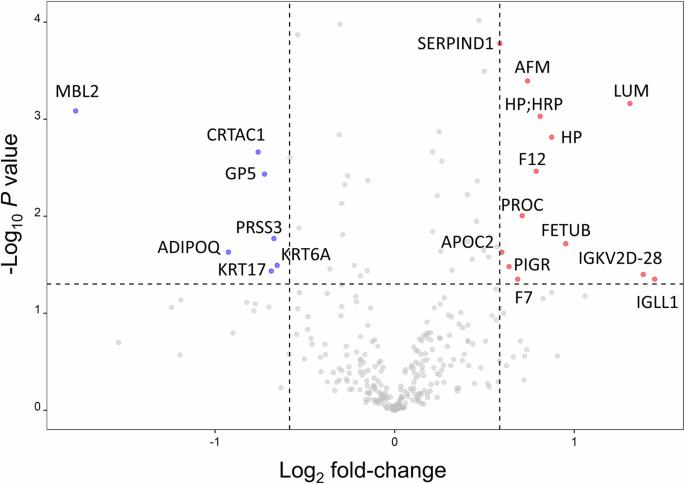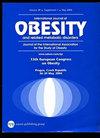Impact of diabetes on proteomic changes in circulating extracellular vesicles in individuals with obesity before and after bariatric surgery
IF 3.8
2区 医学
Q1 ENDOCRINOLOGY & METABOLISM
引用次数: 0
Abstract
Extracellular vesicles (EVs) are implicated in the pathophysiology of obesity and diabetes. This study aimed to analyze the impact of diabetes on EV protein dynamics in patients with obesity before and after bariatric surgery. This prospective study assessed the serum EV proteins in 30 patients with obesity, with and without diabetes, and 37 healthy controls using liquid chromatography-tandem mass spectrometry. EV proteins were also analyzed 6 months after bariatric surgery in patients with obesity. We found 19 differentially expressed proteins (DEPs) in EVs between healthy controls and patients with obesity. In addition, 20 DEPs between patients with obesity who had and did not have diabetes were identified. After bariatric surgery, 14 DEPs mainly involved in the immune system were identified in patients with obesity and diabetes; adiponectin (ADIPOQ), mannose binding lectin 2 (MBL2), and hornerin (HRNR) were associated with glycemic control, body mass index, and weight loss, respectively. In patients with obesity without diabetes, 13 DEPs after bariatric surgery were predominantly involved in reactive oxygen species metabolism. Diabetes affects the differences in EV protein profiles in patients with obesity before and after bariatric surgery. These DEPs may serve as potential biomarkers and therapeutic targets for obesity-related diabetes.

糖尿病对肥胖患者减肥手术前后循环细胞外囊泡蛋白质组学变化的影响
目的:细胞外囊泡(EVs)与肥胖和糖尿病的病理生理有关。本研究旨在分析糖尿病对肥胖患者减肥手术前后EV蛋白动力学的影响。方法:本前瞻性研究采用液相色谱-串联质谱法对30例肥胖、合并和不合并糖尿病患者及37例健康对照者的血清EV蛋白进行了检测。我们还分析了肥胖患者在减肥手术后6个月的EV蛋白。结果:我们在健康对照组和肥胖患者的EVs中发现了19个差异表达蛋白(DEPs)。此外,还确定了患有糖尿病和未患有糖尿病的肥胖患者之间的20个dep。减肥手术后,在肥胖和糖尿病患者中发现了14个主要参与免疫系统的dep;脂联素(ADIPOQ)、甘露糖结合凝集素2 (MBL2)和角激素(HRNR)分别与血糖控制、体重指数和体重减轻有关。在无糖尿病的肥胖患者中,减肥手术后13个dep主要参与活性氧代谢。结论:糖尿病影响减肥手术前后肥胖患者EV蛋白谱的差异。这些dep可能作为肥胖相关糖尿病的潜在生物标志物和治疗靶点。
本文章由计算机程序翻译,如有差异,请以英文原文为准。
求助全文
约1分钟内获得全文
求助全文
来源期刊

International Journal of Obesity
医学-内分泌学与代谢
CiteScore
10.00
自引率
2.00%
发文量
221
审稿时长
3 months
期刊介绍:
The International Journal of Obesity is a multi-disciplinary forum for research describing basic, clinical and applied studies in biochemistry, physiology, genetics and nutrition, molecular, metabolic, psychological and epidemiological aspects of obesity and related disorders.
We publish a range of content types including original research articles, technical reports, reviews, correspondence and brief communications that elaborate on significant advances in the field and cover topical issues.
 求助内容:
求助内容: 应助结果提醒方式:
应助结果提醒方式:


